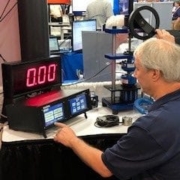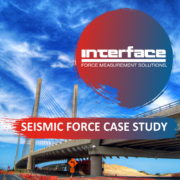Why Civil Engineers Prefer Interface Products
 Infrastructure is one of the most vital industries that utilize Interface force measurement solutions. Our products are chosen for the design, engineering and construction of public works projects including roads, energy structures, bridges, dams, airports, sewage systems, and pipelines.
Infrastructure is one of the most vital industries that utilize Interface force measurement solutions. Our products are chosen for the design, engineering and construction of public works projects including roads, energy structures, bridges, dams, airports, sewage systems, and pipelines.
Civil engineering is a professional discipline that deals with the design, construction, and maintenance of the physical and naturally built environments. It’s the oldest engineering discipline after military engineering, and it was specifically defined to distinguish non-military engineering from military engineering.
Civil engineering is traditionally broken into several sub-disciplines including environmental engineering, geotechnical engineering, structural engineering, transportation engineering, municipal or urban engineering, water resources engineering, materials engineering, coastal engineering, surveying, and construction engineering.
Civil engineers choose Interface sensors for testing structural components as well as for embedding sensors within buildings, waterways, and railways to ensure sustainable and safe construction, modifications, improvements, repairs and use.
Civil engineers’ relationship with and use of force measurement devices is based on two things: testing designs and monitoring completed projects.
Load cells are used from a test perspective throughout the development of infrastructure projects. For example, load cells test specific materials used in the construction of a building to ensure they can handle the required weights and environmental conditions. In the design of a drawbridge bridge, engineers use load cells to test the hydraulic system to ensure it will provide enough force to lift the bridge from a single time to thousands of times by using stress test rigs.
The use of various sensors and measurement devices in civil engineering and construction sectors has grown significantly in recent years. The sensor data from Interface load cells is utilized in every aspect, from rugged construction equipment for regulatory and safety monitoring to real-time quality monitoring of physical structures. One of the reasons is due to the advances in monitoring and reporting capabilities of sensor data. Accessibility to data has improved the ability to use it for complex calculations as well as analyze enormous amounts of output information in real-time. The benefits are improvements in structural designs and overall engineering as a result.
By accessing data remotely through Interface digital instrumentation products, those within the industry can deploy more practical solutions than were historically impossible during some of the original designs. This has transformed approaches to force measurement and load monitoring, providing robust calculations in structural and material engineering. This functionality is why civil engineering sectors rely on Interface for advanced products that deliver accurate, quality and reliable performance.
The following video highlights many products utilized in the infrastructure industry by civil engineers and for the equipment used in construction of their designs.
Force measurement is even used by civil engineers in testing the construction equipment used in a variety of infrastructure projects. One example of this is when Interface supplied a force measurement system to construction engineers to test an aerial lifts capabilities and capacities for safe use.
Aerial Lift Overload Control
A manufacturing company for aerial lifts wanted to test its self-propelled boom lift to ensure it can operate at heavy capacities when in use, and at different angles. They also wanted to prevent any accidents in case of a lifting overload, for the safety of any working individual who uses it. Interface’s solution was to attach the 3A160 3-Axis Force Load Cell to the bottom of the bucket of the boom lift. The 3A160 3-Axis Force Load Cell gave high accuracy results, which can be displayed using the 920i Programmable Weight Indicator and Controller in real time. The manufacturing company tested their aerial boom lifts and determined it was safely operable when maximum capacities had been reached.
Adversely, engineers are also designing force sensors into projects allowing them to monitor the effects of force on certain infrastructure over time. Take for example a project that Interface was involved in that required the monitoring of a bridge.
Bridge Seismic Force Monitoring Solution
A customer wanted to monitor seismic activity that occurred to a bridge by using force sensors, and then continuously monitor bridge forces before, during and after earthquakes. Engineers on the project also preferred a wireless solution so they would not need to run long cables on the bridge. Using Interface’s LP Load Pin custom made to fit their needs, along with Interface Inc. WTS Wireless Telemetry System, continuous force monitoring was able to take place without long cables. The engineers were then able to monitor continuous loads, log information to the cloud and review information, ensuring the bridge would uphold over time and constant seismic activity. Or, allowing engineers to determine when and where repairs are necessary.
Civil engineers represent the minds and hands building critical infrastructure. This is why Interface works closely with those in this profession to ensure our sensors provide the highest quality, accuracy and reliability to keep people safe and moving across our country. To learn more about our work in infrastructure, please visit our Interface Infrastructure Solutions.
Additional Resources
Interface and Infrastructure Markets Form a Perfect Partnership
Infrastructure Industry Relies on Interface Force Measurement
Interface Solutions Designed for Infrastructure Challenges
Infrastructure Projects Rely on Interface
Monitoring the Seismic Force of a Suspension Bridge
Infrastructure-Brochure-1







